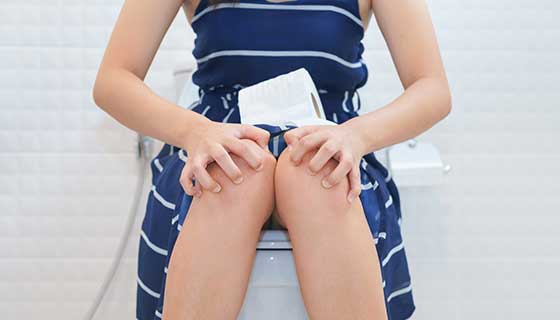Pancreatitis
What is pancreatitis?
Pancreatitis is the swelling (inflammation) of the pancreas. This may happen when digestive juices or enzymes attack the pancreas.
The pancreas lies behind your stomach on the left side of your belly. It's close to the first part of your small intestine (the duodenum).
The pancreas is a gland. It does two main things:
-
It makes enzymes and sends them into your small intestine. These enzymes help break down food.
-
It makes the hormones insulin and glucagon, and sends them into your bloodstream. These hormones control your body’s blood sugar level.
Pancreatitis may be sudden (acute) or ongoing (chronic).
Acute pancreatitis
-
Is a sudden inflammation
-
Lasts for a short time
-
Lets the pancreas return to normal afterward. But repeated attacks of acute pancreatitis can lead to chronic pancreatitis.
-
May cause serious problems or be deadly in severe cases
Chronic pancreatitis
-
Is a long-lasting inflammation that comes and goes over time
-
Causes permanent damage to the pancreas
-
Often causes scarring of pancreatic tissue
-
May cause the pancreas to stop making enzymes and insulin in severe cases
What causes pancreatitis?
The most common causes of pancreatitis include:
-
Alcohol abuse
-
Lumps of solid material (gallstones) found in the gallbladder. Gallstones block the pancreatic duct so the enzymes can’t get out of the pancreas.
Other causes of pancreatitis
-
Belly injury or surgery
-
High levels of fat particles (triglycerides) in the blood
-
Very high levels of calcium in the blood
-
Certain medicines, such as estrogens, steroids, and thiazide diuretics
-
Infections, such as mumps, hepatitis A or B, or salmonella
-
Cystic fibrosis
-
Tumors
-
Certain genetic defects
-
Congenital abnormalities in the pancreas
-
Trauma to the pancreas
-
Cigarette smoking
What are the symptoms of pancreatitis?
Each person’s symptoms may vary. Symptoms may include:
-
Severe belly pain that may spread to your back or chest. (It may feel worse after you eat.)
-
Nausea
-
Vomiting
-
Rapid heart rate
-
Fever
-
Swelling and feeling sore or tender in your upper belly
-
Fluid buildup in your belly
-
Lowered blood pressure
-
Yellowing of the skin and eyes (jaundice)
The symptoms of pancreatitis may look like other health problems. Always see your healthcare provider to be sure.
How is pancreatitis diagnosed?
Your healthcare provider will look at your past health. They will give you a physical exam. You will have some blood, stool, and urine tests done. You may also have some imaging tests including:
-
Abdominal (belly) X-ray. Makes images of internal tissues, bones, and organs.
-
Ultrasound (sonography). Uses sound waves to see the internal organs of the belly. It also checks how blood is flowing through different blood vessels.
-
EUS (endoscopic ultrasound). This is an internal type of ultrasound done through a flexible tube (endoscope) inserted through the mouth while you are sleeping.
-
ERCP (endoscopic retrograde cholangiopancreatography). This is used to find and treat problems in your liver, gallbladder, bile ducts, and pancreas. It uses X-ray and a long, flexible tube with a light and camera at one end (an endoscope). The tube is put into your mouth and throat. It goes down your food pipe (esophagus), through your stomach, and into the first part of your small intestine (duodenum). A dye is put into your bile ducts through the tube. The dye lets the bile ducts be seen clearly on X-rays.
-
CT scan. This imaging test shows detailed X-ray images of any part of the body, such as the bones, muscles, fat, and organs. CT scans are more detailed than regular X-rays.
-
MRCP (magnetic resonance cholangiopancreatography). This uses MRI to make detailed images of your pancreas, gallbladder, and pancreatic and bile ducts. This test is often done with a standard MRI where a contrast dye is used to see images more clearly.
How is pancreatitis treated?
The treatment goal is to rest the pancreas and let it heal.
In most cases, you:
-
Will be in the hospital for a few days
-
Will be given IV (intravenous) fluids
-
Will be given pain medicine and antibiotics
If it's mild, you may be able to eat clear liquids or a low-fat diet. However, if it's bad, you may not be able to eat or drink for a few days to let your pancreas rest. A feeding tube may need to be used in some situations.
Pancreatitis often gets better in a few days. If any problems happen, treatment may include:
-
NG tube (nasogastric tube). This is a thin tube passed down your nose and into your stomach. It's used if vomiting is a problem. The tube can be used for a few weeks. It can be used to remove fluid and air and give your pancreas more time to heal. It can also be used to put liquid food into your stomach as you heal.
-
ERCP (endoscopic retrograde cholangiopancreatography). This is used to find and treat problems in your liver, gallbladder, bile ducts, and pancreas. It uses an X-ray and a long, flexible, lighted tube (an endoscope). The tube is put into your mouth and throat. It goes down your food pipe (esophagus), through your stomach, and into the first part of your small intestine (duodenum). A dye is injected into the bile ducts through the tube. The dye lets the bile ducts be seen clearly on X-rays. The tube has tools in it. The tools can remove fluid and blockages and take out gallstones. They can also put stents (firm tubes) in the ducts to keep them open.
-
Surgery to remove gallstones or your gallbladder. This is done if gallstones or your gallbladder are causing pancreatitis.
If you have chronic pancreatitis you may also:
-
Have to stop drinking alcohol (if your pancreatitis is caused by alcohol abuse)
-
Have to stop smoking
-
Need enzyme supplements to help digest your food
-
Need insulin (if you get diabetes)
-
Need to eat small high-protein, low-fat meals
-
Need surgery to remove the permanently damaged part of your pancreas
-
Need medicine for chronic pain
What are possible complications of pancreatitis?
Acute pancreatitis usually gets better on its own over time. Most people recover without any problems. A small number of cases end up with fluid collections around the pancreas that need drainage.
Chronic pancreatitis may also get better on its own. But that can take longer, after a few attacks. Chronic pancreatitis has a greater risk of long-term problems, such as:
-
Diabetes
-
Chronic pain
-
Diarrhea
-
Weight loss
-
Low vitamin levels from malabsorption
-
A collection of fluid (pseudocyst) around the pancreas
-
Bile duct blockages
-
Permanent pancreas damage
-
Pancreatic cancer
Key points about pancreatitis
-
Pancreatitis is the swelling (inflammation) of the pancreas.
-
It may be sudden (acute) or ongoing (chronic).
-
The most common causes are alcohol abuse and lumps of solid material (gallstones) in the gallbladder.
-
The goal for treatment is to rest the pancreas and let it heal.
-
You will likely be in the hospital for a few days.
-
You may need drainage of abnormal fluid collections, imaging tests to evaluate the pancreas for disease, and rarely surgery to permanently damaged part of the pancreas.
-
It's very important to stop smoking and drinking or the pancreatitis will usually happen again and get worse.
Next steps
Tips to help you get the most from a visit to your healthcare provider:
-
Know the reason for your visit and what you want to happen.
-
Before your visit, write down questions you want answered.
-
Bring someone with you to help you ask questions and remember what your provider tells you.
-
At the visit, write down the name of a new diagnosis, and any new medicines, treatments, or tests. Also write down any new instructions your provider gives you.
-
Know why a new medicine or treatment is prescribed, and how it will help you. Also know what the side effects are and when they should be reported.
-
Ask if your condition can be treated in other ways.
-
Know why a test or procedure is recommended and what the results could mean.
-
Know what to expect if you do not take the medicine or have the test or procedure.
-
If you have a follow-up appointment, write down the date, time, and purpose for that visit.
-
Know how you can contact your healthcare provider if you have questions, especially after office hours or on weekends and holidays.






